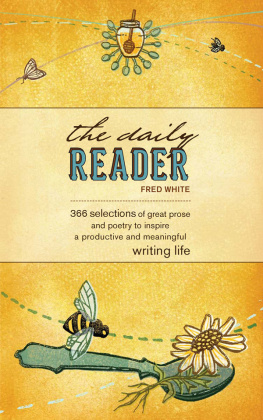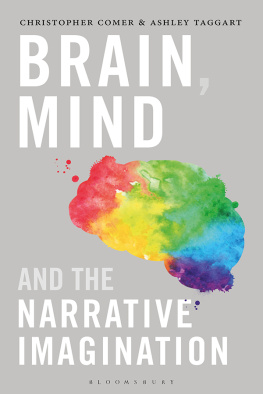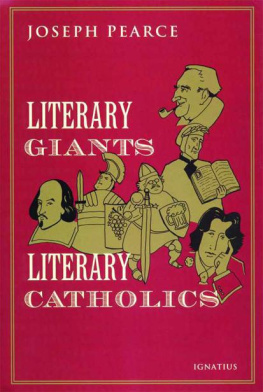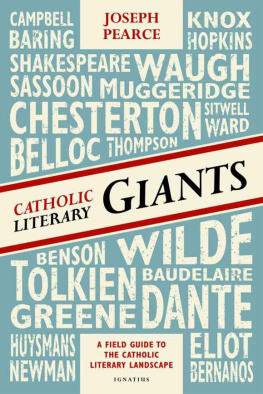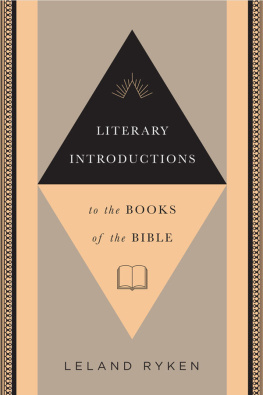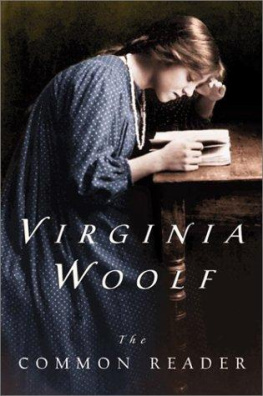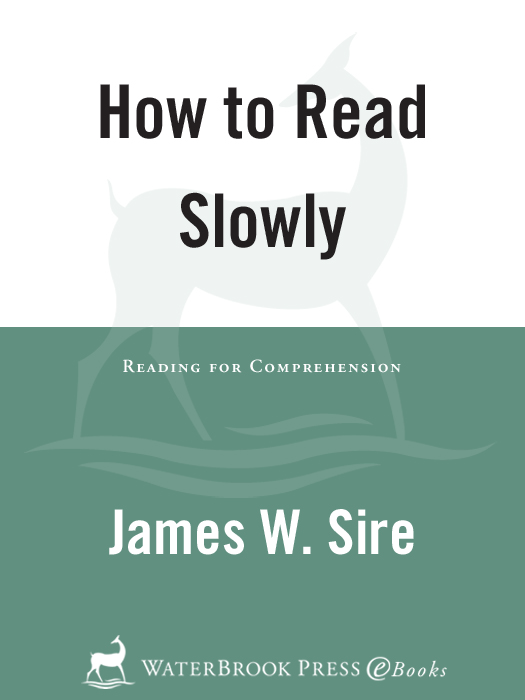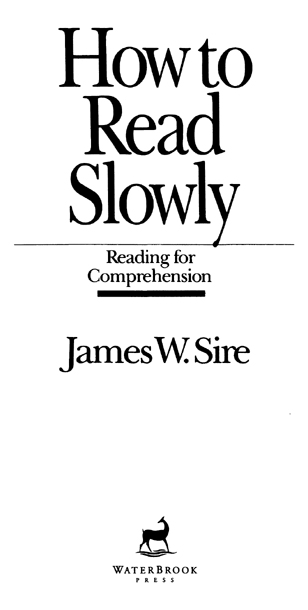Books have swept me away,
one after the other, this way and that;
I made endless vows according to their lights,
for I believed them.
Annie Dillard
H OW T O R EAD S LOWLY
P UBLISHED BY W ATER B ROOK P RESS
12265 Oracle Blvd., Suite 200
Colorado Springs, Colorado 80921
Copyright 1978, James W. Sire
All rights reserved. No part of this book may be reproduced or transmitted in any form or by any means, electronic or mechanical, including photocopying, recording, or by any information storage and retrieval system, without written permission from the publisher.
Published in the United States by WaterBrook Multnomah, an imprint of the Crown Publishing Group, a division of Random House Inc., New York.
Library of Congress Cataloging-in-Publication Data
Sire, James W.
How to read slowly: reading for comprehension / James W. Sire.
p. cm. (The Wheaton literary series)
Reprint. Originally published: Downers Grove, IL.: InterVarsity Press, 1978
eISBN: 978-0-307-76890-2
1. Books and reading. 2. Reading comprehension. I. Title. II. Series.
Z1003.S597 1988
428.43dc19 88-11499
v3.1
To my father
who in his eighties
still reads voraciously
Preface to the Second Edition
I was delighted when C. Stephen Board, a very long-time friend (every author should have one who is the director of a publishing house), suggested that this book be brought back into print for the third time. InterVarsity Press issued it first in 1978 under the present title and Multnomah Press in 1984 under the title The Joy of Reading. Still, the present edition is only the second since all that was changed in the Multnomah publication was the title.
Here I have updated the reading plan in the Appendix, removing books that no longer seem as important as before and added a few titles published since 1978 and a few older ones I have come to appreciate. In my reading I tend to find an author whose work I like and then devour most of what they have written. Recently these authors include Shusaku Endo, Lewis Thomas, Wendell Berry, Gary Snyder, Frederick Buechner, Annie Dillard, Jorge Luis Borges, Stanislaw Lem, and Czeslaw Milosz. And I have also been immersing myself in the Japanese haiku poetry of Matsuo Basho, Taniguchi Buson, Issa and Masaoka Shiki.
I find each of them fascinating for very different reasons. I commend them to anyone who wants not only what my British friends call a good read but an insight into what it means to be human. May this book be a stimulus to read much, much more than this book! You may even read this book fast, if you promise to read all others slowly.
James W. Sire
Downers Grove
August 1988
Contents
Acknowledgments
For Pamela McCorduck, An Introduction to the Humanities with Prof. Polemy. Copyright reprint with permission of The Chronicle of Higher Education, February 9. Copyright 1976 by Editorial Projects for Education, Inc.
For William Carlos Williams, The Red Wheelbarrow. William Carlos Williams, Collected Poems, Volume I: 1909-1939. Copyright 1938 by New Directions Publishing Corporation.
For the epigraph to chapter five. From A Portrait of the Artist as a Young Man by James Joyce. Copyright 1916 by B. W. Huebsch. Copyright 1944 by Nora Joyce. Copyright renewed 1964 by the Estate of James Joyce. All rights reserved. Reprinted by permission of Viking Penguin Inc. Acknowledgment is also due to The Society of Authors as the literary representative of the Estate of James Joyce.
Polonius: What do you read, my lord?
Hamlet: Words, words, words.
Polonius: What is the matter, my lord?
Hamlet: Between who?
Polonius: I mean the matter you read, my lord.
Hamlet: Slanders, sir: for the satirical rogue says here that old men have grey beards, that their faces are wrinkled, their eyes purging [discharging] thick amber and plum tree gum and that they have a plentiful lack of wit, together with most weak hams: all which, sir, though I most powerfully and potently believe, yet I hold it not honesty to have it thus set down, for yourself, sir, should be as old as I am, if like a crab you could go backward.
Polonius [aside]: Though this be madness, yet there is method int.
Shakespeare, Hamlet
Chapter 1
A Method in Our Madness:
An Introduction to Reading with the Mind
My father is a rancher, a retired purebred Hereford breeder to be exact. All his life he has wanted me to take over the small Nebraska ranch I was raised on. Very early he must have known that that wasnt going to work out. I always had my nose in other thingslike electronics, ham radio and books.
I remember one summer, home from college and without a job, I went with our family on the annual Hereford Tour. A caravan of fifty cars and a hundred and fifty ranchers trailed its way from ranch to ranch where cattlemen displayed their herds and let their fellow ranchers and potential customers know just how good their cattle were. A lot of pride went into being selected to be a stop on the tour, and our ranch had been selected that year.
But what did I do? I brought along G. G. Simpsons The Meaning of Evolution, just published in paperback at the time. While the rest of the family climbed up on wooden fences and watched the parade of fine Hereford stock, I stayed in the car, enraptured by Simpson, underlining the text and putting brackets in the margins.
A couple of summers later while trying to sell a method of cookingVita Crafts absolutely unpittable-aluminum-last-a-lifetime cookwareI pulled my junk car to the side of the road and read Stephen Cranes Red Badge of Courage and Dostoyevskys The Idiot. That same day I twisted the psychological arms of two sweet, young high-school graduates but made no sale. Forsooth! That summer I bought and read more books than I sold cookware. Early on, reading became for me a way of lifejoyous, fascinating, refreshing, challenging. It is out of that context that this book comes.
I dont expect any reader to imitate my own lifestyle nor to adopt point for point the precise values that I would at my best affirm. But I do want to announce at the beginning that I love reading and would like to help others love it tooand do it better.
Is This Book for You?
Primarily this book is for Christians. That is not because I think there is a peculiarly Christian way to read. I dont. Rather, reading well is a broadly human craft and can be practiced by any person with basic intelligence. In fact, most of this book should be useful to anyone who wants to learn how to read better. Still, I am most interested in encouraging Christians to think and read well. Christians, of all people, should reflect the mind of their Maker. Learning to read well is a step toward loving God with your mind. It is a leap toward thinking Gods thoughts after him.
Since this book is directed toward Christians, I would ask those who do not consider themselves Christians to forgive the apparent oddness of some of what I say. Maybe, if you hear me out, by the end of the book you wont think it quite so odd.
To be specific, then, I have three basic categories of readers in mind. First are Christians who want to learn how to read better. I am thinking here of those of you who have not specifically studied reading in college. Majoring in chemistry, engineering or economics, you have practiced reading but never looked at it as a craft, something that can be isolated, studied and learned. You have wanted to read primarily to


